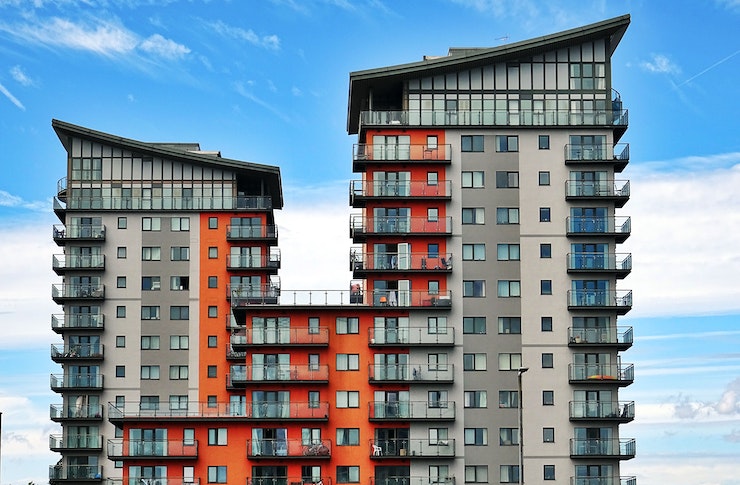Title: Micro-apartments: The Future of Urban Living?
In a world where urban spaces are becoming increasingly crowded and expensive, a new trend is emerging in the real estate market: micro-apartments. These compact living spaces, typically ranging from 200 to 400 square feet, are challenging traditional notions of what constitutes a home. As cities grapple with housing shortages and skyrocketing rents, micro-apartments offer a potential solution that's catching the attention of developers, investors, and young professionals alike.

Economic Drivers Behind the Trend
The surge in popularity of micro-apartments can be attributed to several economic factors. Firstly, the increasing cost of land in prime urban locations has forced developers to rethink traditional apartment sizes. By creating smaller units, they can offer more affordable options in desirable neighborhoods. Secondly, changing demographics play a crucial role. Millennials and Gen Z, who often prioritize location and lifestyle over space, are driving demand for these compact homes. Lastly, the rise of the gig economy and remote work has reduced the need for large living spaces, making micro-apartments an attractive option for many young professionals.
Design Innovations in Micro-Spaces
Architects and interior designers are rising to the challenge of making micro-apartments not just livable, but desirable. The key lies in intelligent design that maximizes functionality without sacrificing comfort. Murphy beds that transform into desks during the day, kitchens that fold away when not in use, and movable walls that create flexible living areas are just a few examples of the innovations being implemented. High ceilings and large windows are often incorporated to create a sense of spaciousness, while built-in storage solutions ensure that every nook and cranny is utilized effectively.
Impact on Urban Development and Sustainability
The proliferation of micro-apartments could have significant implications for urban development and sustainability. By increasing housing density, these units allow more people to live in city centers, potentially reducing urban sprawl and the need for long commutes. This, in turn, could lead to reduced carbon emissions and a smaller environmental footprint per resident. Additionally, the compact nature of these apartments often results in lower energy consumption for heating and cooling, further contributing to their eco-friendly appeal.
Challenges and Criticisms
Despite their potential benefits, micro-apartments are not without controversy. Critics argue that these tiny living spaces could lead to a decrease in quality of life and potentially exacerbate issues of overcrowding in urban areas. There are concerns about the long-term psychological effects of living in such confined spaces, particularly for families or those who work from home. Additionally, some cities have pushed back against micro-apartments, implementing minimum size requirements for new developments to prevent what they see as potential slum-like conditions.
Regulatory Landscape and Zoning Challenges
The development of micro-apartments often faces hurdles in the form of outdated zoning laws and building codes. Many cities have minimum square footage requirements for residential units that were established decades ago and don’t account for modern living trends. Progressive cities are beginning to revise these regulations to accommodate micro-units, recognizing their potential to address housing shortages. However, the process is slow, and developers often face an uphill battle in getting approval for these innovative projects.
Investment Potential and Market Outlook
For real estate investors, micro-apartments present an intriguing opportunity. The higher density of units per building can potentially lead to greater rental income per square foot compared to traditional apartments. However, the investment landscape is not without risks. The long-term demand for these units remains uncertain, and there’s a possibility of market saturation in some areas. Investors need to carefully consider location, target demographic, and potential regulatory changes before diving into this niche market.
The Future of Micro-Living
As urban populations continue to grow and housing affordability remains a pressing issue, micro-apartments are likely to play an increasingly important role in the real estate market. The success of this housing model will depend on several factors, including continued innovation in design, adaptation of regulatory frameworks, and shifts in cultural attitudes towards living space. While they may not be suitable for everyone, micro-apartments offer a creative solution to urban housing challenges and could reshape the way we think about city living in the years to come.
In conclusion, micro-apartments represent a fascinating convergence of economic, demographic, and technological trends in the real estate market. As cities evolve and adapt to changing needs, these compact living spaces may well become a significant part of the urban landscape. Whether they’re a temporary solution or a long-term shift in housing norms remains to be seen, but one thing is clear: micro-apartments are challenging our perceptions of what makes a home and could play a crucial role in shaping the cities of tomorrow.





